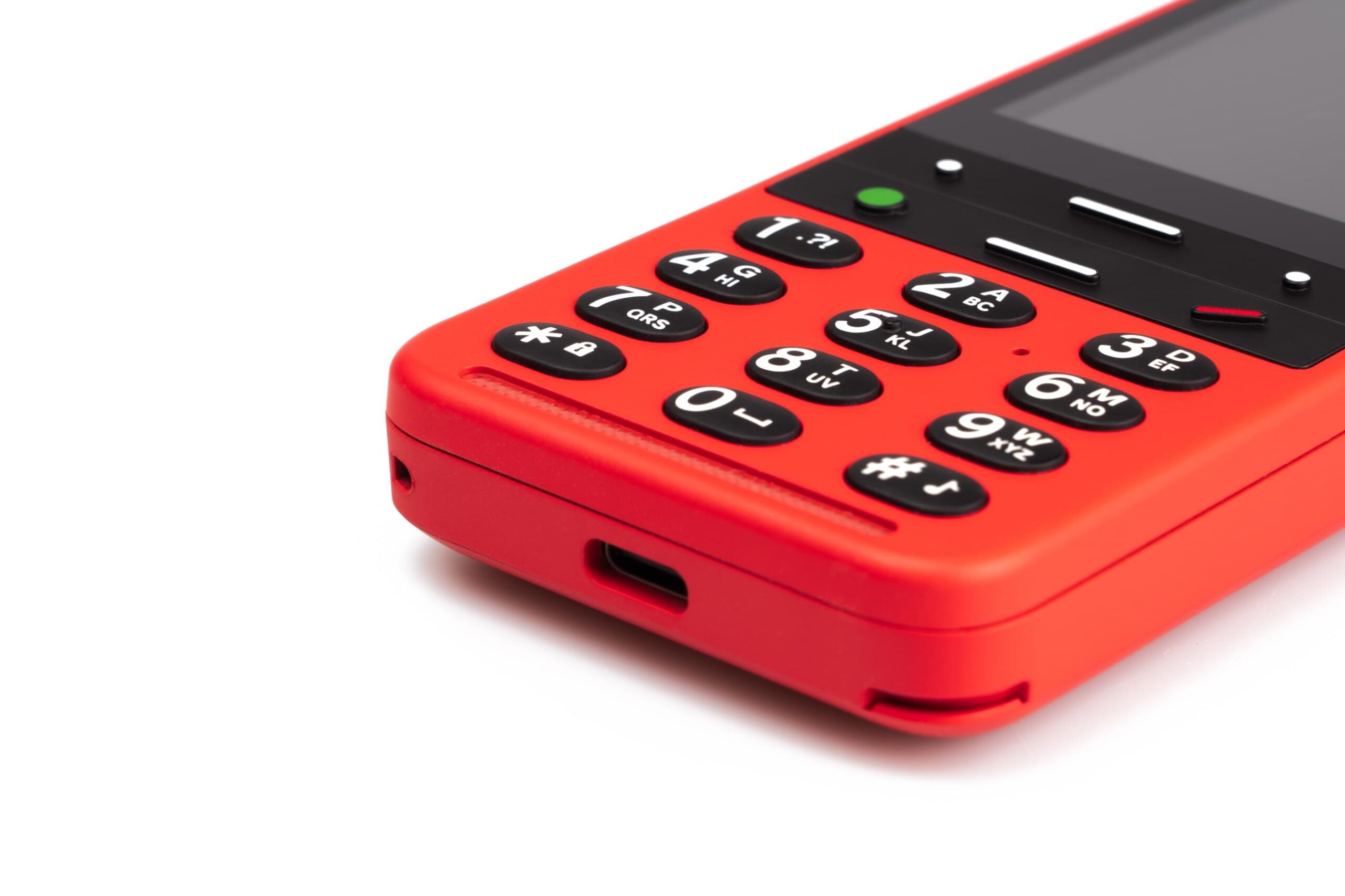
In the latest of our Technology Product Reviews, Maureen Lanigan in the NCBI Labs team provides us with an insight into the BlindShell Classic 2, a mobile phone with a screen reader and physical keypad.
Item Name: BlindShell Classic 2 mobile phone
Reviewed by: Maureen Lanigan
Description
The BlindShell Classic 2 is the updated handset of the original BlindShell Classic mobile phone. It is an accessible phone for the blind and visually impaired user. The phone has a functional screen reader, a physical keypad and a large print/high contrast screen that is customisable. The Classic 2 supports a number of apps, including WhatsApp. This review, however, focuses mainly on using the handset for making phone calls, sending text messages, and using the dictate option for both.
Unboxing / What are my first impressions of the item?
The handset fits comfortably in one hand, is the regular, rectangular “candy-bar” shape (approximate size 5” x 2”) and has a definite weight when held – to me, it felt secure in the hand. The keypad buttons are tactile and spaced apart, as well as the # 5 having a distinct dot to assist locating its position. The volume rocker switch at the left-hand edge is raised from the casing, as is the action button (used for the dictate feature) on the right-hand edge, making both of these easy to find.
I have been using this for a few days, how do I feel about it?
The Back button, which is located directly above # 3 on the keypad, must be held down for 1-2 seconds in order to turn on the phone; a musical tone is played some 5-10 seconds after that to indicate that the phone has come on and the time is then announced – all positive audio affirmations.
I found that the menu structure and layout quickly became familiar and intuitive to me the more I used the Blind shell Classic 2 handset. Moving between options, selecting different choices, dictating content, were skills that developed easily and with which I felt proficient after only a short period of time.
Is it accessible?
It certainly “ticked a couple of boxes” for me with the following:
- Screen content is a significant size, certainly larger than I’ve come across on other similarly sized handsets.
- All content on screen and each menu item is spoken in a clear voice.
- Navigation is easily managed by what Blind shell terms “up and down buttons,” but which are actually two horizontal lines, one above the other and are to be found at the bottom of the screen in the centre, directly above the #2 button on the keypad.
What did I like?
Screen images: the screen is clear with large images to represent the seven main menu options, namely, Call, Messages, Contacts, Applications, Settings, Manual and, lastly, Turn off the Phone. The main menu may be navigated either forwards/backwards, using the up/down buttons.
Texting: when manually entering text, a definite “click” sound may be heard when a letter has been entered. Alternatively, the action button on the right edge, when held in for, say 1-2 seconds, activates the micro-phone and, on speaking the content, will convert the spoken word to printed text in the text message.
Voice control: holding in the action button on the right edge enables the dictate feature which, in turn, supports making a telephone call by voice instruction rather than using the tactile keypad.
What didn’t I like?
While the 1-page QuickStart Guide that comes with the handset provides a good overview of a basic “how to get started” with the BlindShell Classic 2, the font size is quite small. Also, the diagrams with number descriptors don’t indicate which button to press in order to turn on the handset.
When adding a Contact, I was disappointed that the dictation button wouldn’t accept a spoken telephone number.
Did it meet my expectations?
Not having any pre-conceived idea as to how this mobile phone would handle, I found it took only a relatively short period of time to become proficient in using its features. The dictate option, when used, say, to make a phone call, is a very practical feature and one which I liked but I quickly became aware of the importance of my speaking clearly and distinctly in order for it to work successfully for me.
What improvements, if any, would I like to see in this product?
I’m regularly asked the question “is there a mobile phone with big buttons?”. There may well be scope for future iterations of the BlindShell Classic to perhaps reduce the screen size in favour of giving increased/maximum space to the keypad.
Would I recommend this item to others?
Without doubt, I would encourage any person who is considering changing their mobile phone to contact their local NCBI IT Trainer and arrange an appointment to review this handset as it may well meet their individual requirements. It comes with a charging cradle, full user manual (in very small print but which is also provided in audio format on the phone) and is SIM-free.
Is there other/competing technology you have tried, similar to this item?
All of the mobile phones in the BlindShell range are designed with tactile buttons, large screens and come with pre-installed screen reading software. Other manufacturers may offer handsets with some but perhaps not all of these features – a brief browse via the Internet returned a limited number of results, not all of which are currently available in Ireland.
Alternatively, the range of Android and iOS handsets presently on the market offers choice to the end user and a wide range of options when it comes to ease of access features, many of which may suit the personal requirements and preferences of the individual.
To purchase a BlindShell 2 phone or to arrange a demonstration please email [email protected] or call 1800 911 110. You can also visit the NCBI Online Store.